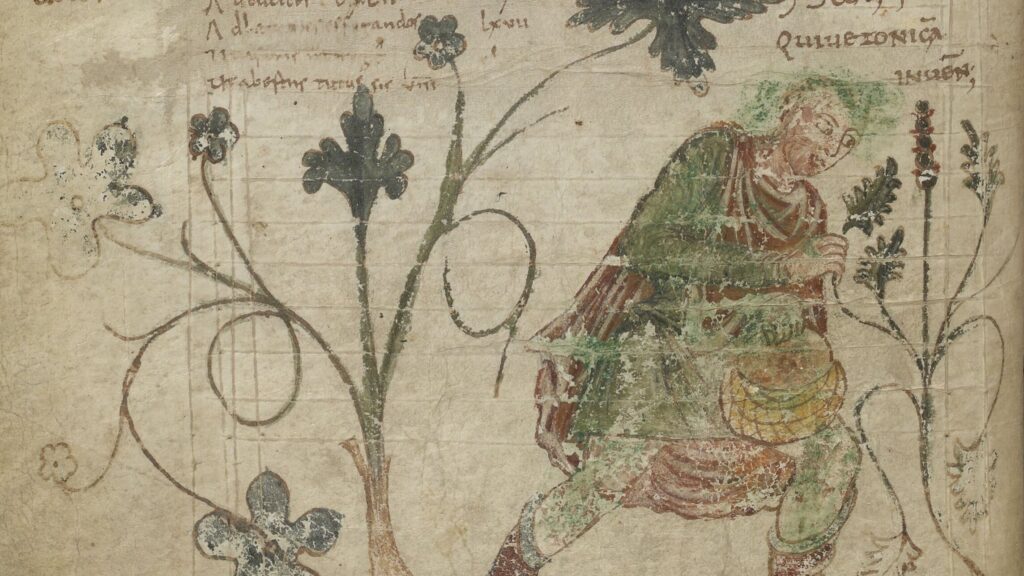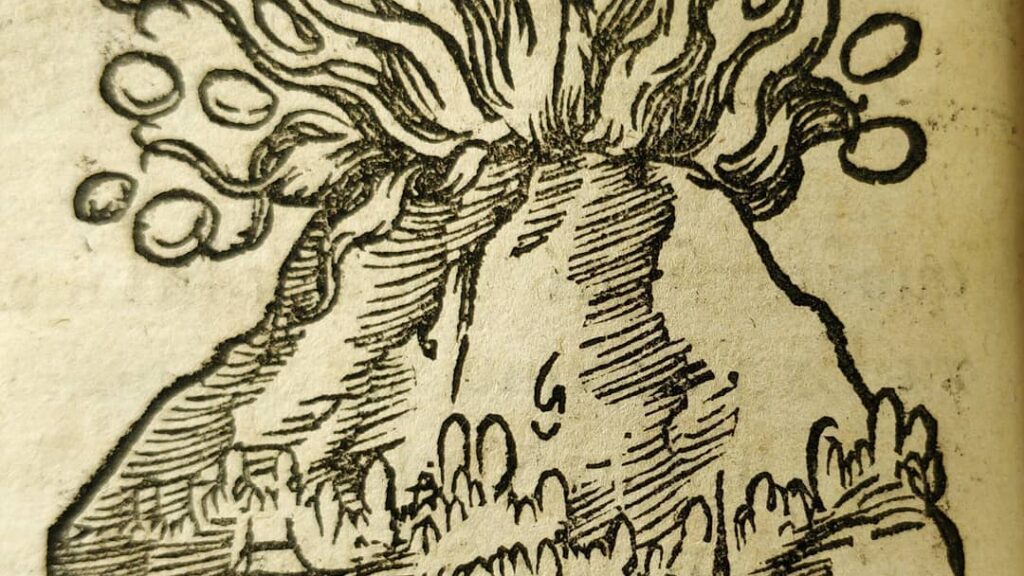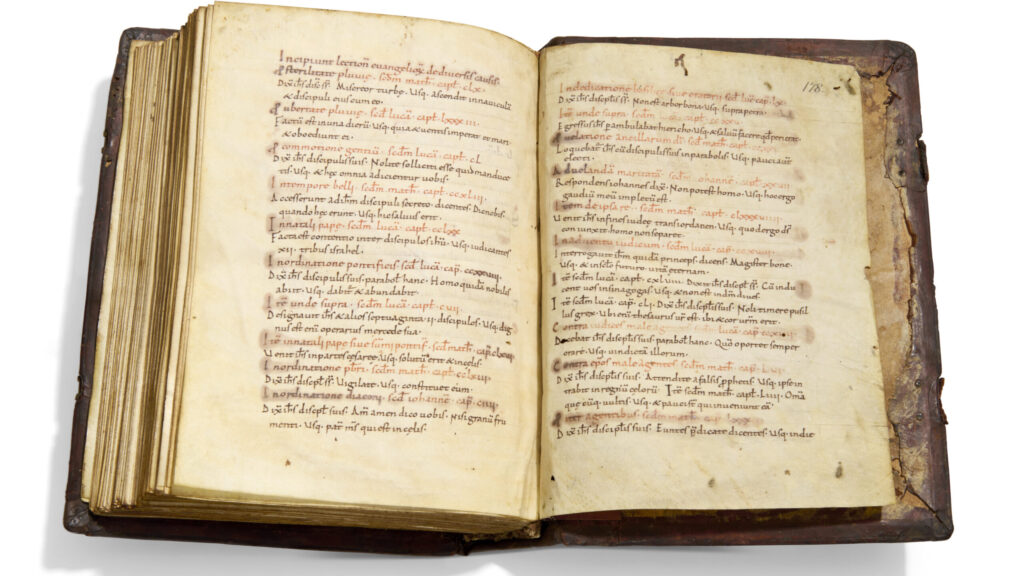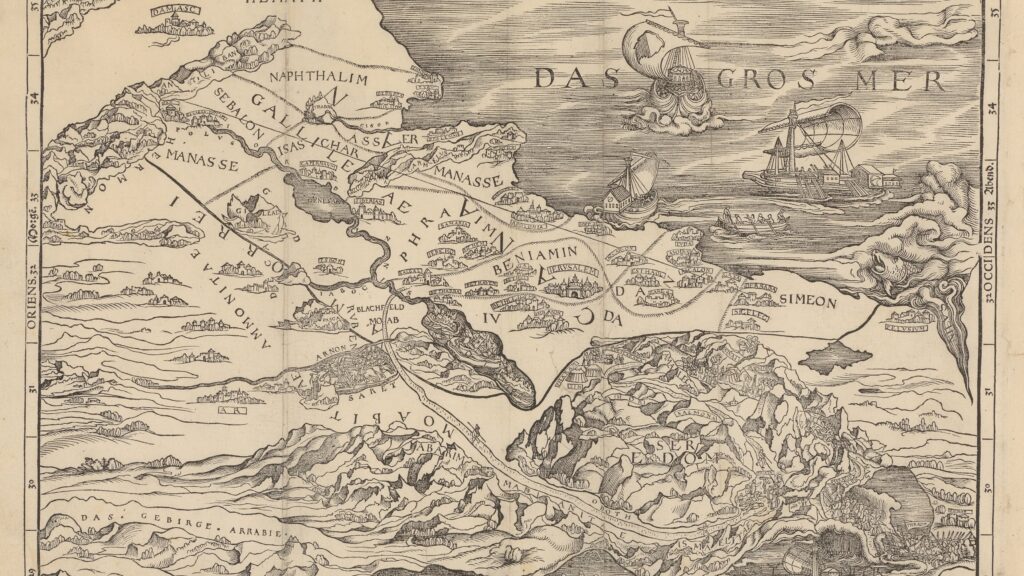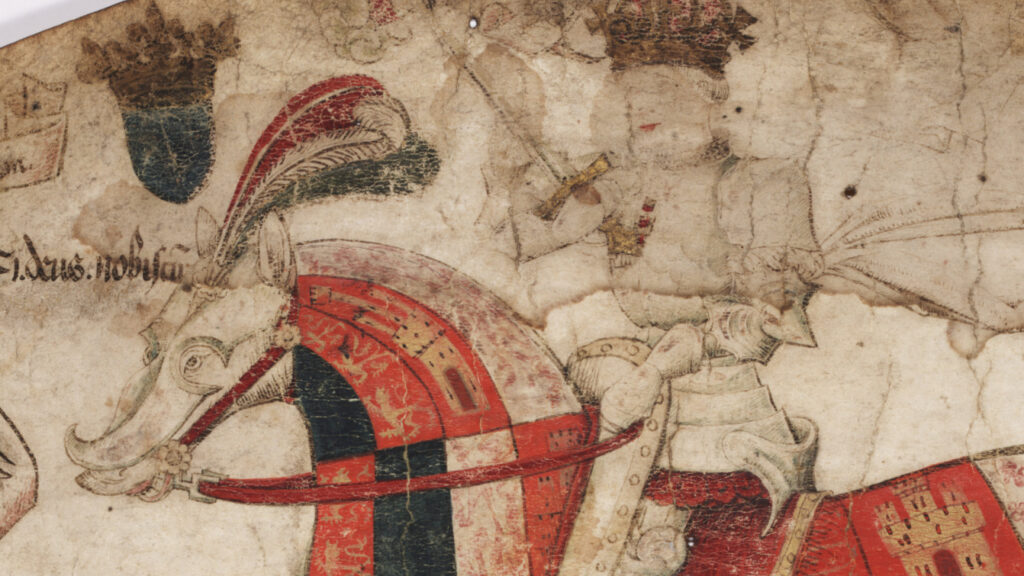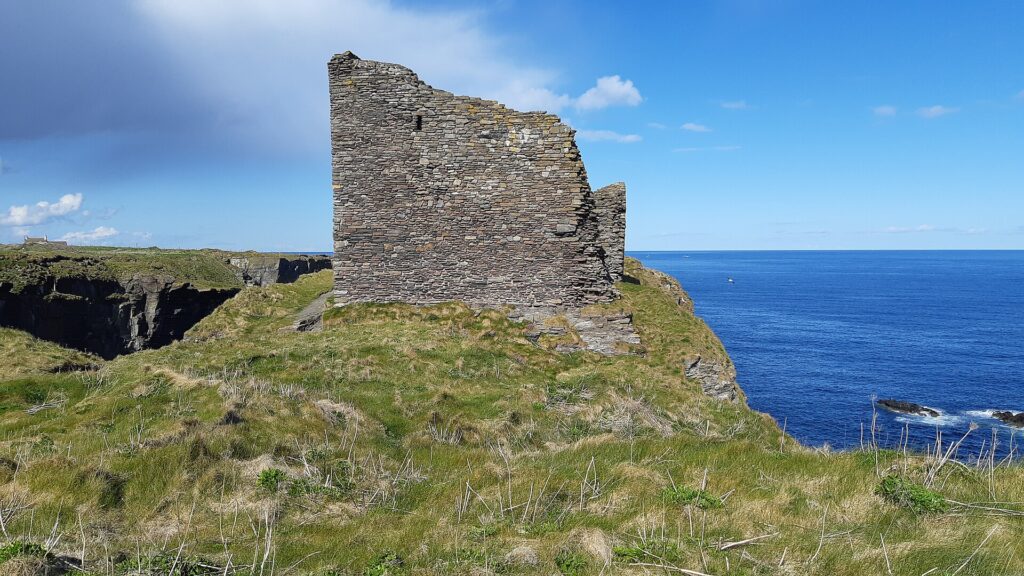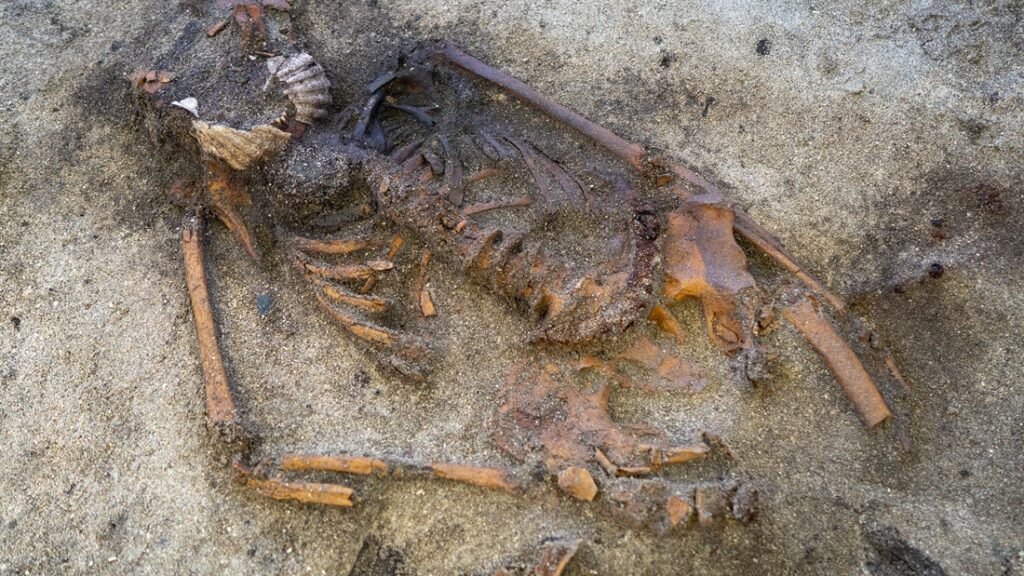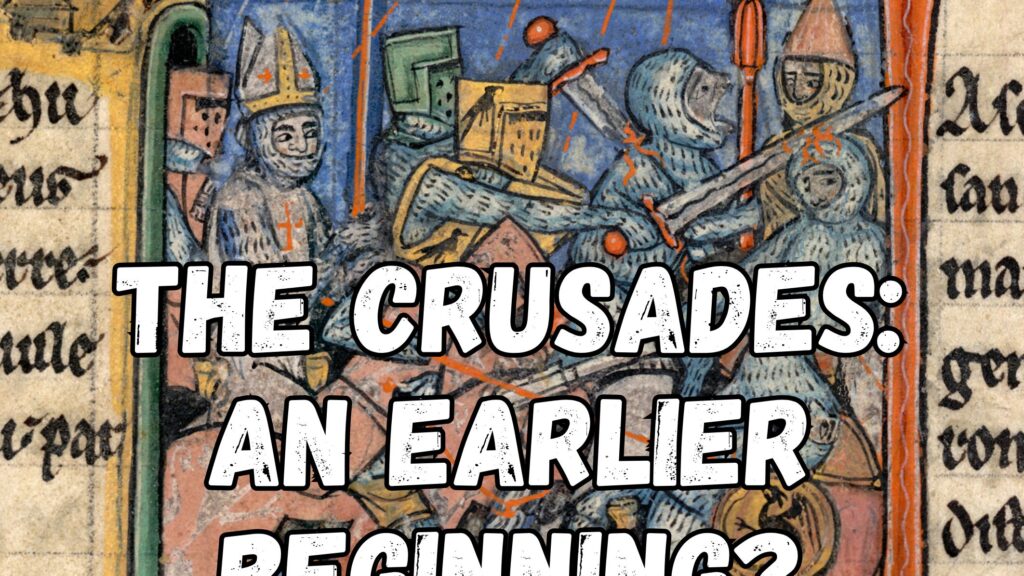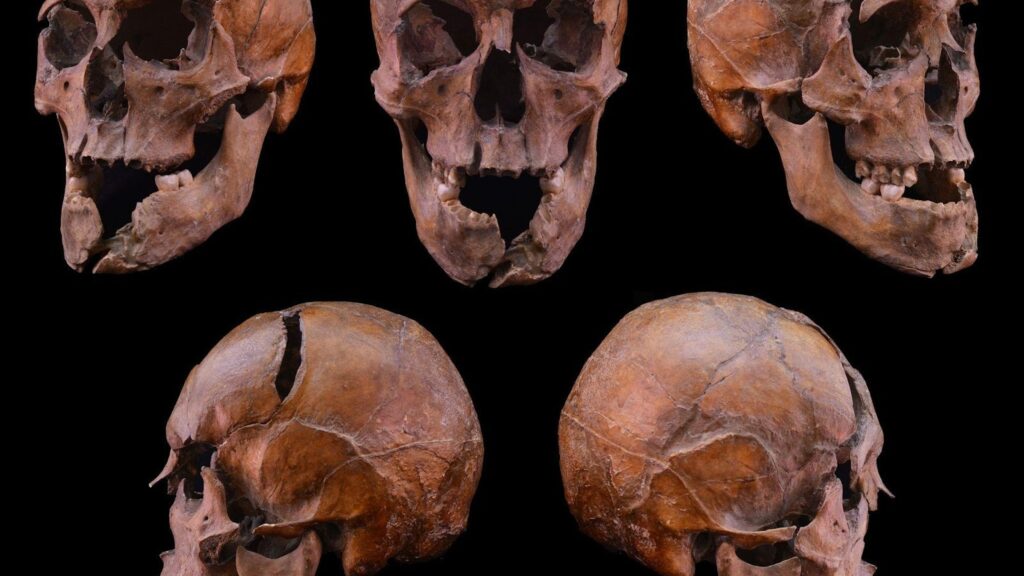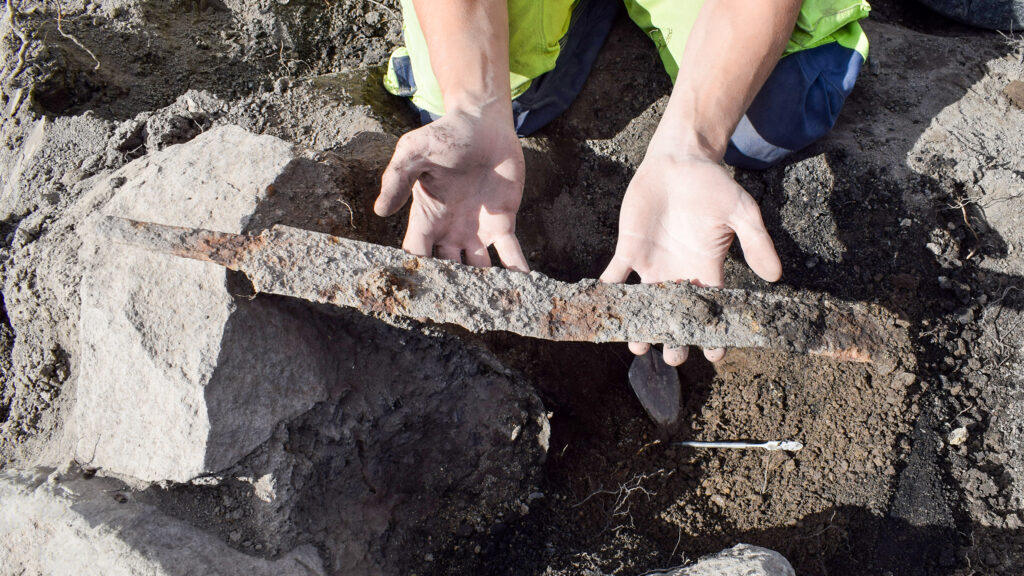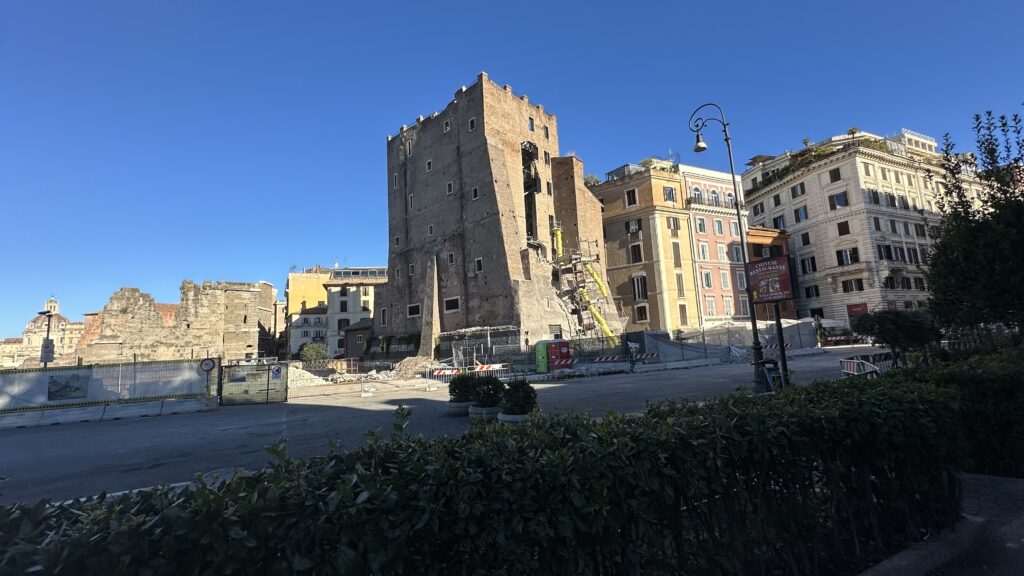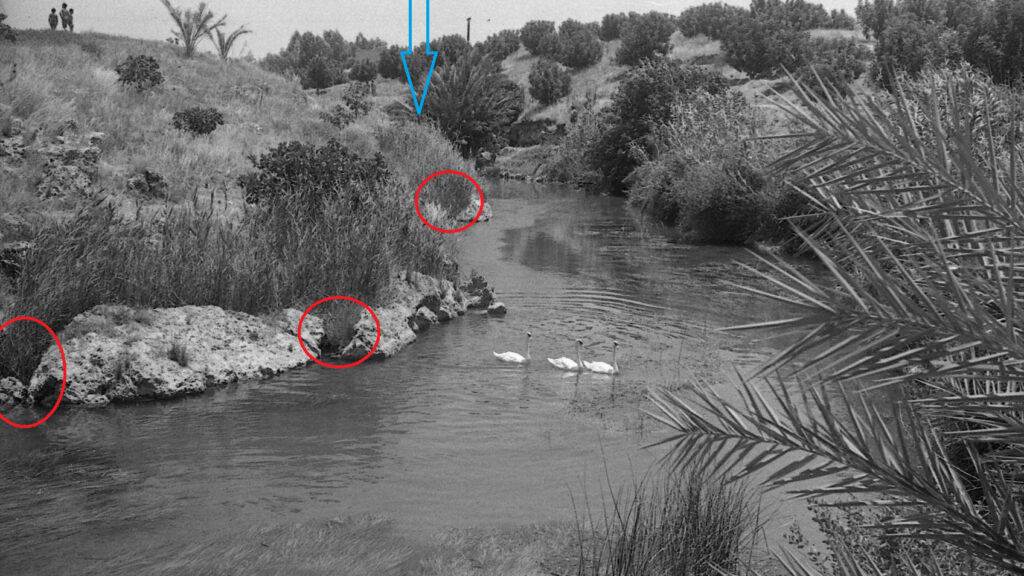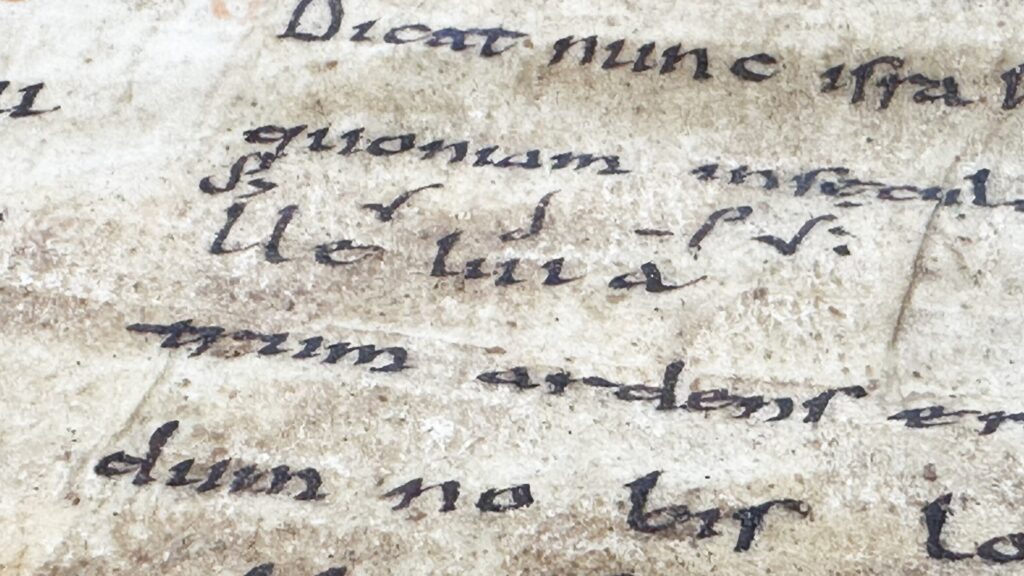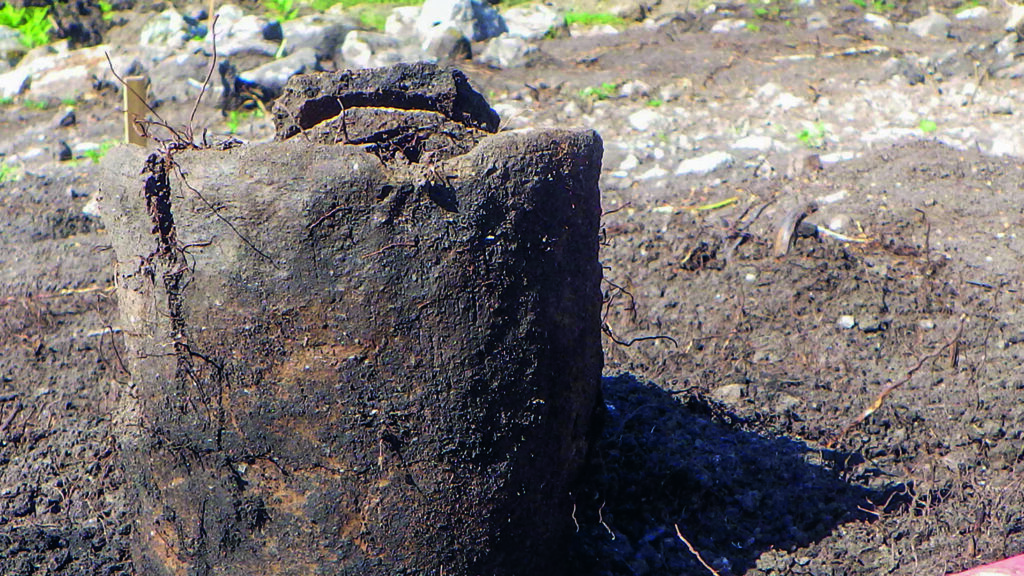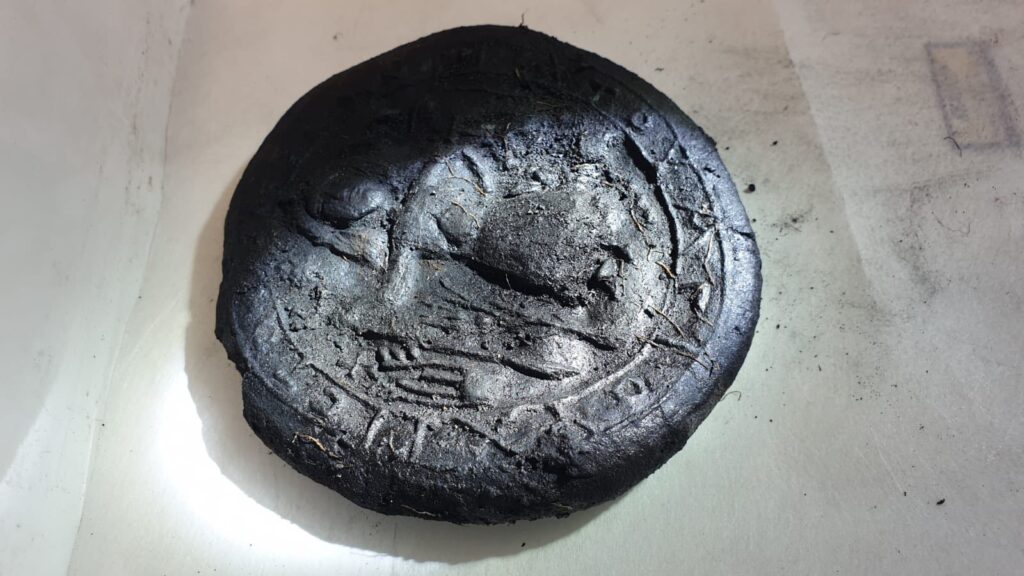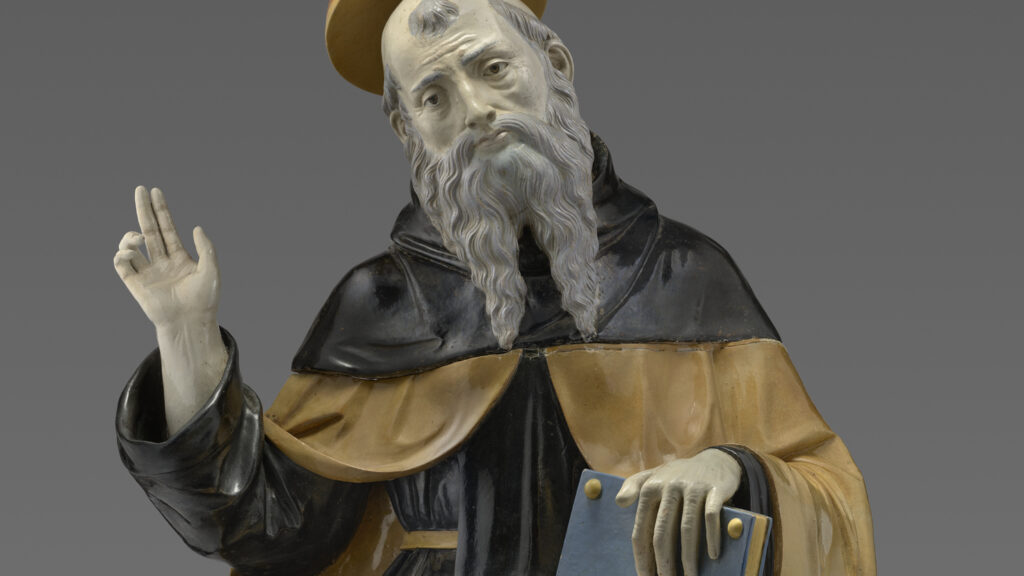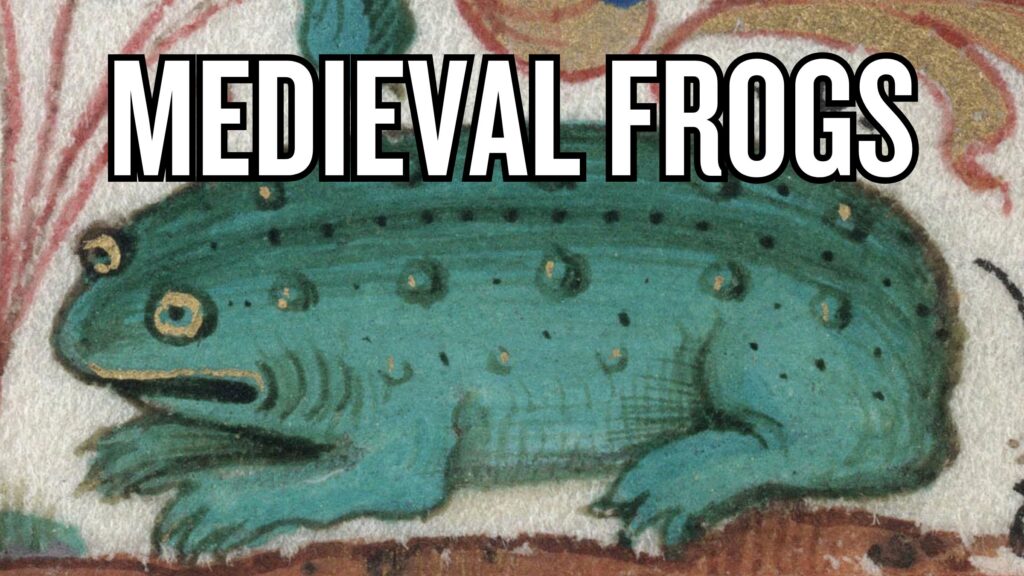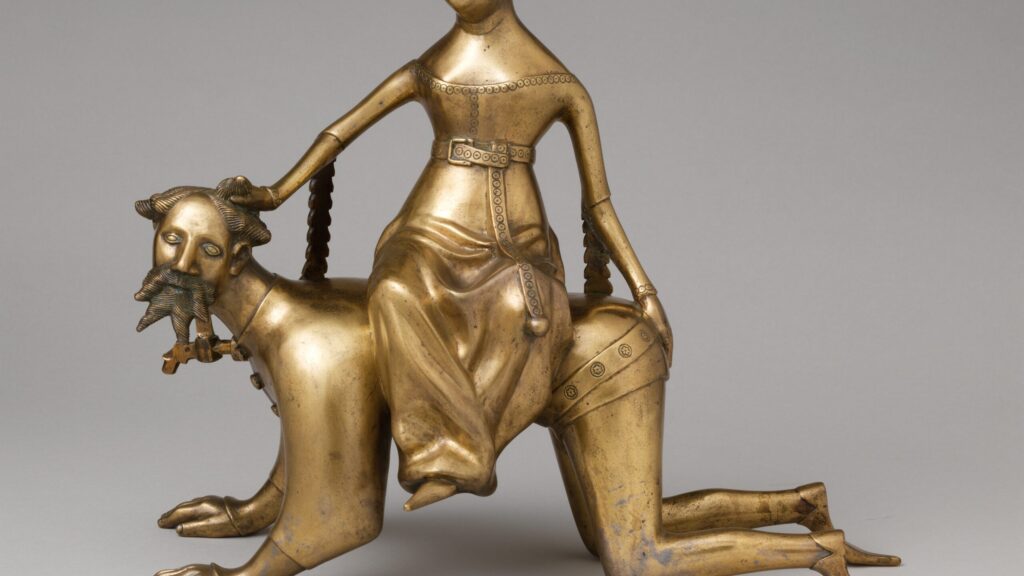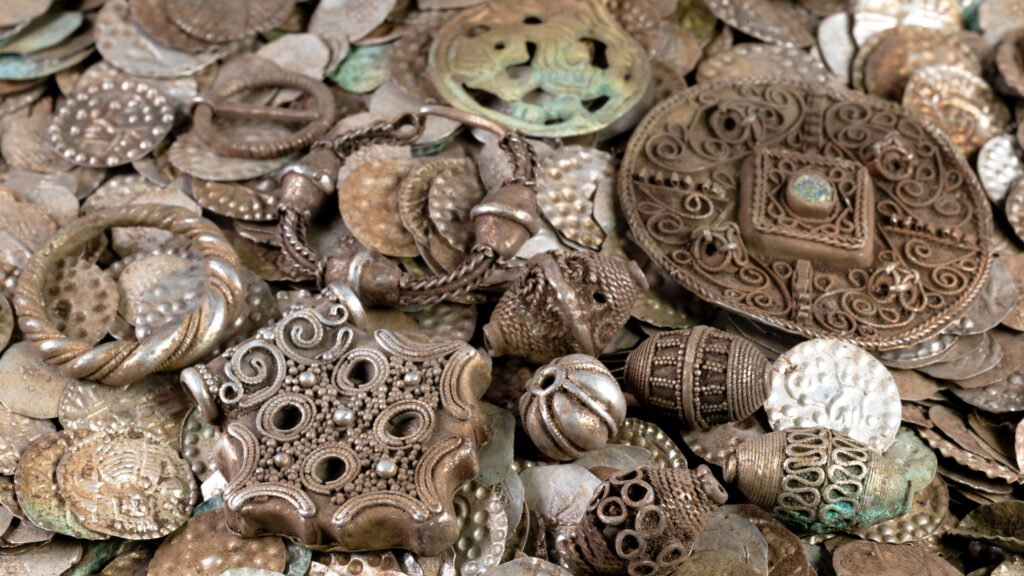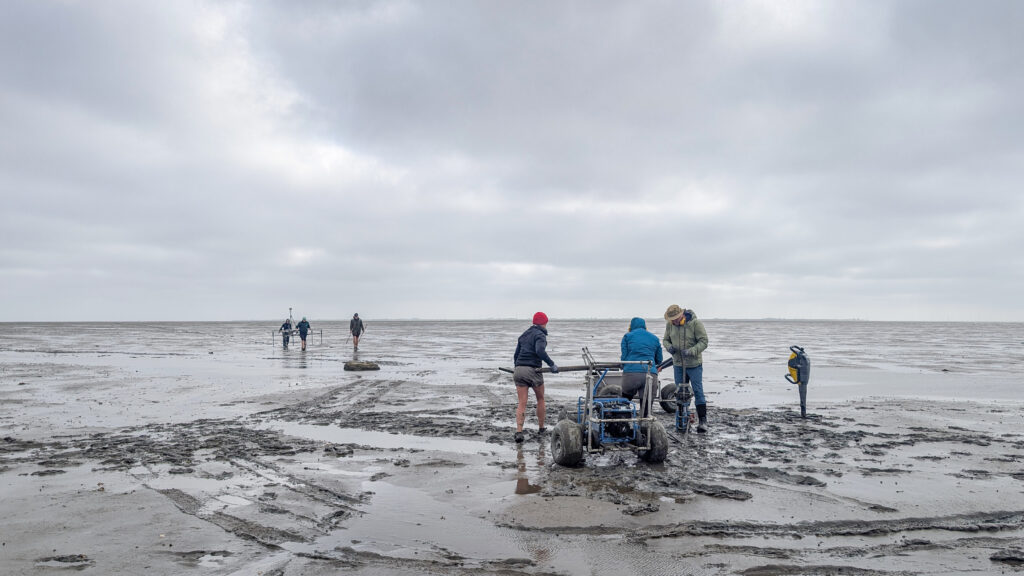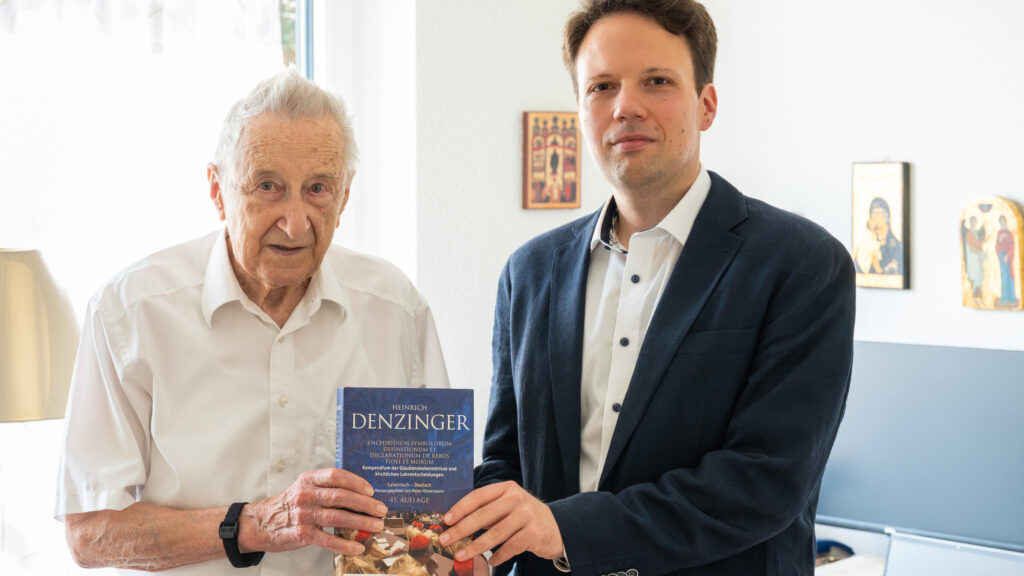Medieval Farmers Created a Biodiversity Boom, Study Finds
A new study reveals that medieval communities around Lake Constance created a biodiversity peak through innovative farming, trade, and land management, offering insights for modern conservation.
Medieval Cemetery Unearthed in Denmark Reveals Over 50 Skeletons
Archaeologists in Aarhus, Denmark, have uncovered more than 50 skeletons in a medieval cemetery linked to St. Oluf’s Church, offering rare insight into the city’s transition from the Viking Age to Christian Europe.
Volcanic Eruption Set the Stage for the Black Death, Researchers Find
A major volcanic eruption in 1345 triggered climate shocks, famine, and grain trade routes that helped bring the Black Death into Europe, new research shows.
Thousand-Year-Old Medieval Gospel Linked to Women Scribes Heads to Auction
Christie’s will auction a newly identified 10th-century Gospel manuscript, one of the few surviving examples connected to medieval women scribes.
The First Bible Map Turns 500 – And It Helped Shape How We See Borders Today
The 1525 Holy Land map, the first ever printed in a Bible, not only revolutionised biblical illustration but helped shape early modern concepts of territory and nationhood, a new study finds.
Medieval Genealogical Roll Goes Online
A richly illustrated medieval genealogical roll of Edward IV has been digitised and translated for the first time, offering high-resolution images, annotations, and new insights into fifteenth-century political propaganda through the Digital Mappa platform.
Medieval Castle of Old Wick Reopens to Visitors
The Castle of Old Wick in northern Scotland has reopened to the public following a round of high-level masonry inspections and minor repairs completed by Historic Environment Scotland (HES).
Viking Age Woman’s Grave with Mysterious Scallop Ritual Unearthed in Norway
Archaeologists in Norway have uncovered a rare and well-preserved Viking Age grave containing the remains of a woman buried with jewellery, clothing accessories and an unexplained ritual involving two scallop shells.
Could the Crusades Have Started Decades Earlier?
New research suggests that the Crusades may have begun far earlier than 1095. A study of a 1062 Byzantine embassy reveals Emperor Constantine X Doukas may have sought Western aid—and even invoked Jerusalem—decades before the First Crusade.
The Assassination of Duke Béla of Macsó: Forensic Science Reveals a Medieval Murder
Forensic and genetic analysis of bones found on Margaret Island has confirmed they belong to Duke Béla of Macsó—revealing his royal lineage, diet, and the brutal details of his 1272 assassination.
Viking Age Artefacts Discovered in Sweden
Archaeologists in Sweden have uncovered Viking Age graves containing swords, ornate horse gear, and cremation sites in the central region of Västmanland.
Medieval Torre dei Conti Collapses in Rome, Killing One Worker
A section of the 13th-century Torre dei Conti in Rome collapsed during restoration work, killing one worker and injuring others. Authorities are investigating the cause of the collapse at the historic medieval tower.
Medieval Sugar Mill Complex Discovered in Israel
Archaeologists in northern Israel have uncovered Mamluk-era tunnels beneath Gan Ha-Shelosha National Park, revealing a 15th–16th-century sugar mill complex powered by brackish spring water.
Medieval Musical Notations Discovered in 9th-Century Manuscript
A newly identified 9th-century manuscript leaf may contain some of the earliest known examples of written music in Western Europe — what experts are calling a rare witness to the very dawn of musical notation. The manuscript leaf is being offered on the public market for $80,000 US.
Viking-Age Woman’s Burial Discovered in Sweden
Archaeologists in Sweden have uncovered the grave of a woman buried between 8th and 9th century AD, during the early Viking Age, at a site that had already been inhabited more than two thousand years earlier.
Medieval Bread Discovered in Turkey
Archaeologists in southern Turkey have uncovered five carbonised loaves of bread dating to the 7th–8th centuries AD, offering a rare glimpse into early medieval Christian life and worship.
Renaissance Sculpture Acquired by The Getty
The J. Paul Getty Museum has announced the acquisition of a life-size glazed terracotta sculpture by Andrea della Robbia, one of the foremost sculptors of the Italian Renaissance. The work depicts Saint Anthony the Abbot, a third- and fourth-century Christian hermit famed for his asceticism and role as a model for monastic life.
The Medieval Frog: From Healing Charm to Cautionary Tale
In medieval Europe, frogs were both feared and useful — condemned as unclean yet valued in medical recipes and moral tales. A new study explores how this unlikely creature moved from the healer’s toolkit to the storyteller’s page, revealing the many roles of the medieval frog.
New Medieval Exhibition Opens at The Met Cloisters
A new exhibition at The Met Cloisters in New York invites visitors to reconsider the medieval past through the art of human desire. Spectrum of Desire: Love, Sex, and Gender in the Middle Ages explores how artists from the 13th to 15th centuries depicted passion, devotion, and identity in ways that were both deeply spiritual and strikingly sensual.
Medieval Silver Hoard Discovered in Sweden
An unusually large and remarkably well-preserved silver treasure from the Middle Ages has been discovered near the Swedish capital city of Stockholm. The hoard, weighing around six kilograms, was found while the individual was digging for earthworms near a summer house.
Donatello’s Medieval Masterpiece Moved for Conservation Work
Donatello’s Gattamelata, the celebrated bronze equestrian statue in Padua, has been carefully removed from its pedestal for conservation. Experts are conducting detailed studies to prepare for the restoration of this fifteenth-century masterpiece.
Uncovering Medieval North Frisia: New Research Unit Explores Human Impact on the Wadden Sea
The TORF Research Unit is uncovering the medieval past of North Frisia’s Wadden Sea—revealing drowned settlements like Rungholt, storm surge disasters, and centuries-old human efforts to shape the coastline.
“One Shall Stand, One Shall Fall”: Arthurian Legend Meets Transformers: The Movie
Does Transformers: The Movie offer something for medievalists? A new study reveals how the 1986 film echoes Arthurian legend—from Optimus Prime’s chivalric death to Hot Rod’s rise as a young Arthur figure and the Matrix of Leadership as a Grail-like relic.
Brewing Controversy: How Coffee Sparked Fierce Debate in the 16th-Century
A bitter new drink swept through the holy cities of Mecca and Medina in the early 1500s – and ignited one of the fiercest religious debates of the late-medieval Islamic world.
Medieval Councils to Feature in New Edition of the Denzinger Compendium
A new edition of the Denzinger compendium will spotlight medieval reform councils like the Council of Constance, highlighting their enduring influence on Church governance.
